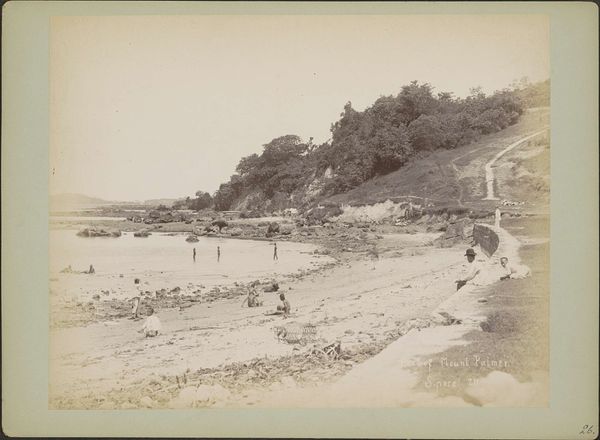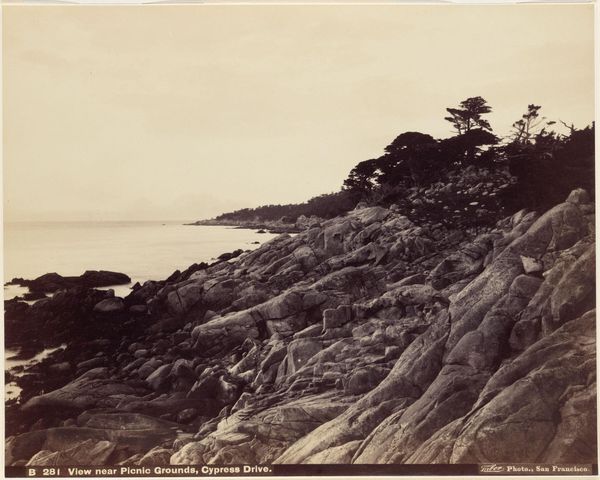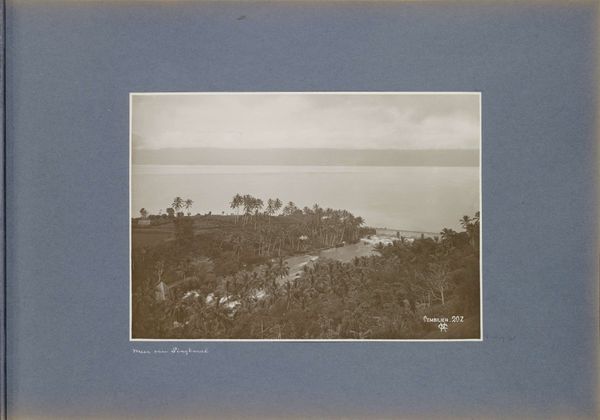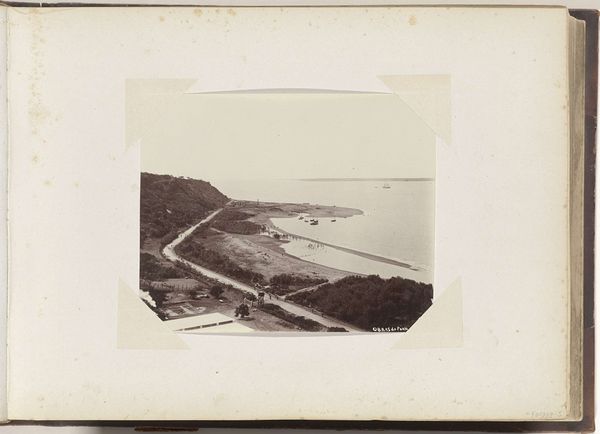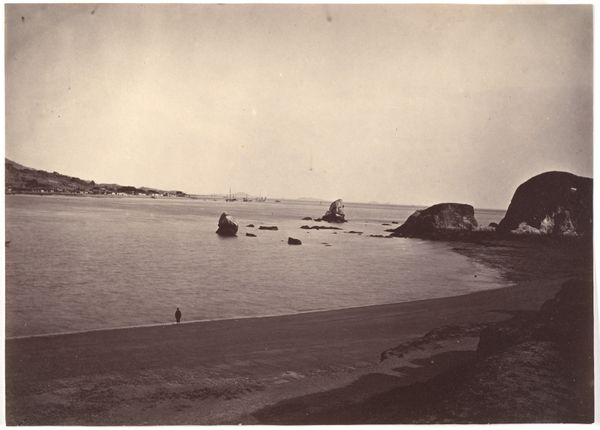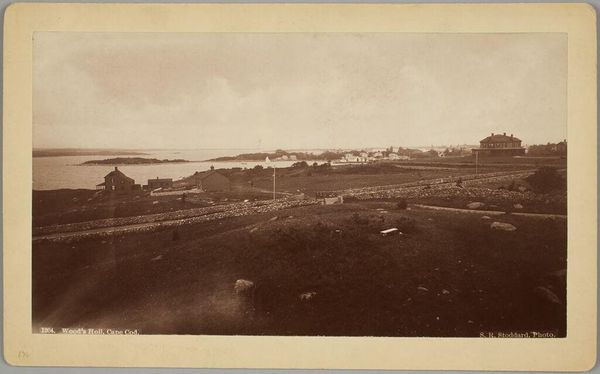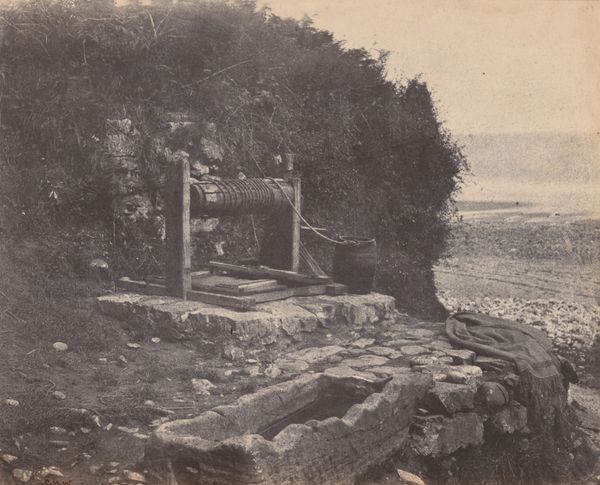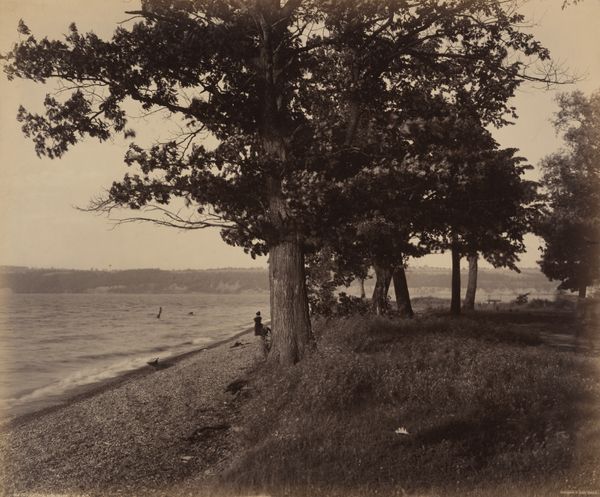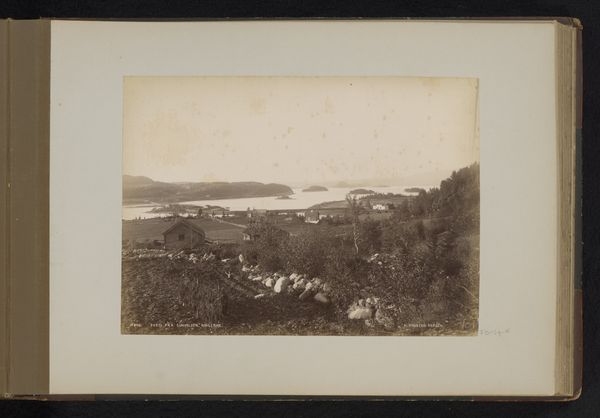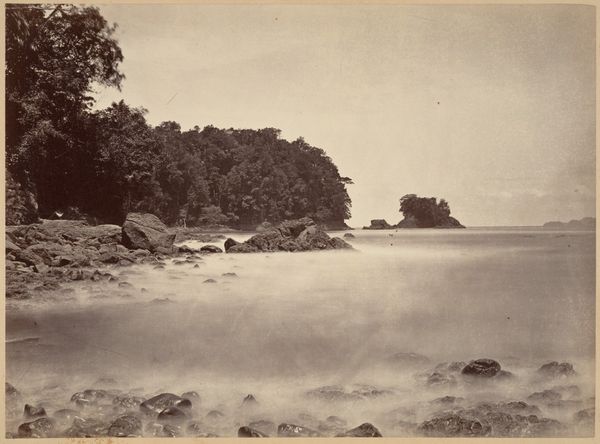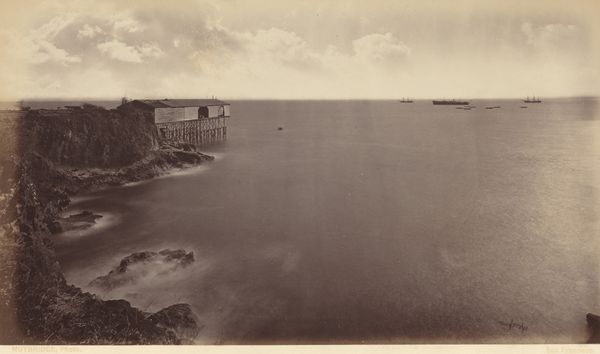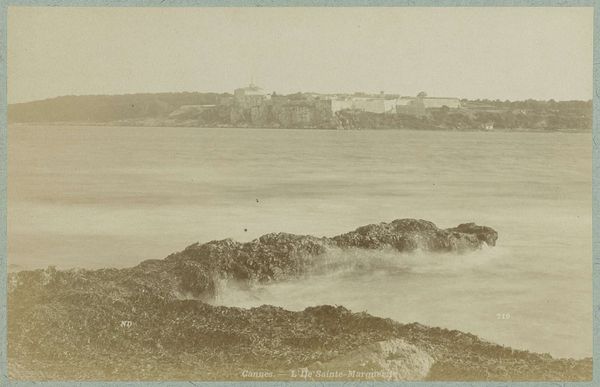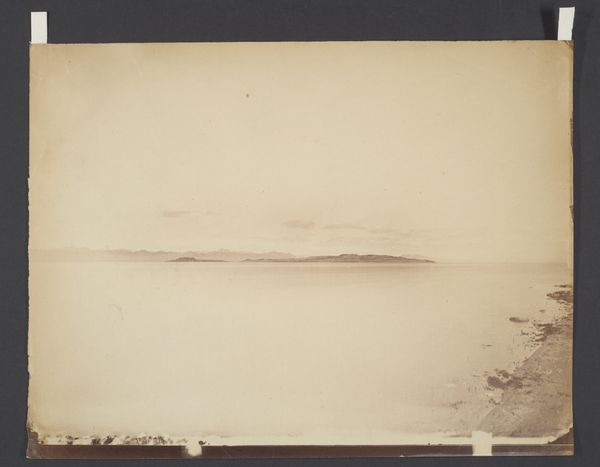![[Landscape, Pride's Crossing] by Samuel Masury](/_next/image?url=https%3A%2F%2Fd2w8kbdekdi1gv.cloudfront.net%2FeyJidWNrZXQiOiAiYXJ0ZXJhLWltYWdlcy1idWNrZXQiLCAia2V5IjogImFydHdvcmtzLzVkNzdiZGI4LWUxZjgtNDdmMi1hMGNhLTc2NmEwOTA4YjkyNy81ZDc3YmRiOC1lMWY4LTQ3ZjItYTBjYS03NjZhMDkwOGI5MjdfZnVsbC5qcGciLCAiZWRpdHMiOiB7InJlc2l6ZSI6IHsid2lkdGgiOiAxOTIwLCAiaGVpZ2h0IjogMTkyMCwgImZpdCI6ICJpbnNpZGUifX19&w=3840&q=75)
#
print photography
#
photo of handprinted image
#
film photography
#
photo restoration
#
wedding photography
#
colourisation
#
landscape
#
curved letter used
#
watercolour illustration
#
celebration photography
#
watercolor
Dimensions: 10 1/8 x 13 1/2
Copyright: Public Domain
Editor: We’re looking at "Landscape, Pride’s Crossing," a photograph by Samuel Masury created sometime between 1854 and 1858. It’s a remarkably serene image. I’m immediately drawn to how Masury frames the vast, open ocean with the dense, shadowy foreground. It feels very balanced, yet also… a bit melancholy. What strikes you most about this work? Curator: Oh, melancholy is spot on! For me, it's the dreamlike quality, like stepping into a half-remembered summer day. The scene is composed so that our eye travels from the solid earth to the boundless sea, inviting reflection. Think about what photography meant at that time. To capture a landscape with this clarity was almost magical. Do you think Masury was trying to just record a scene or evoke something more? Editor: I think it’s more than just a record. There's a deliberate composition at play—the placement of the trees, the little figures on the beach... they guide your eye. It feels posed, almost. But what’s the feeling he’s trying to create, other than that wistful melancholy? Curator: Perhaps it's a commentary on humanity's relationship with nature? The small figures dwarfed by the immensity of the ocean. It feels romantic, almost, that sense of awe and insignificance when confronted with the sublime. Does the limited tonal range of the photograph itself contribute to that feeling for you? Editor: Definitely. The sepia tones give it this timeless quality, like a memory faded with age. It makes me wonder about who those tiny figures are and what their story might be. Curator: Precisely! And in that wondering, that's where the art lives, doesn’t it? Editor: Absolutely. I initially saw it as a simple landscape, but now I realize there’s a whole world of emotions and questions packed into this one image. Curator: It's a beautiful example of how early photography can transcend mere documentation and become truly evocative art, a mirror reflecting not just a scene but also a feeling.
Comments
No comments
Be the first to comment and join the conversation on the ultimate creative platform.
